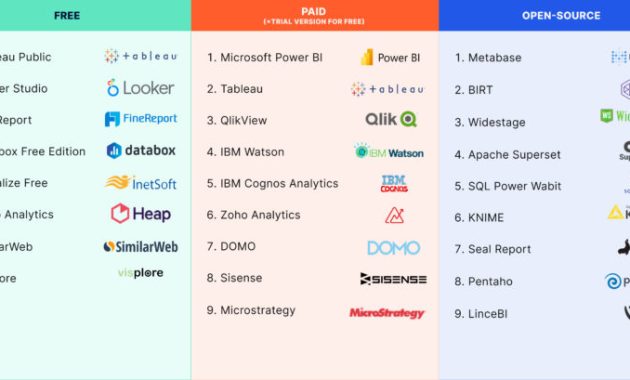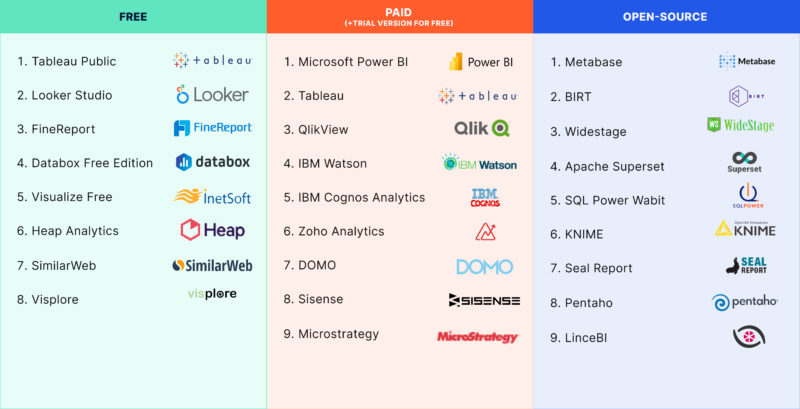
Business Intelligence Tools: Navigating the Data Deluge and Unsubscribing from the Metrics Overload
The world of business is awash in data. Every click, transaction, and interaction generates a digital footprint, leading to an unprecedented volume of information. This data, when harnessed effectively, can be a powerful tool for strategic decision-making and operational efficiency. However, the sheer scale of this information can be overwhelming. The constant influx of metrics, reports, and dashboards can lead to a phenomenon we might call ‘metrics overload.’ This is where business intelligence tools come in, offering a crucial function: the ability to unsubscribe from the noise and focus on what truly matters.
This article delves into the importance of business intelligence tools, specifically focusing on how they help businesses unsubscribe from the metrics overload. We will explore the challenges of data saturation, the benefits of effective data management, and how various business intelligence tools offer solutions for focused data analysis.
The Data Deluge: A Double-Edged Sword
The rise of big data has transformed the business landscape. Companies now have access to more information than ever before. This data can reveal valuable insights into customer behavior, market trends, and operational inefficiencies. However, this abundance of data also presents significant challenges. Without proper management, this data can become a burden rather than a benefit. Teams can find themselves drowning in dashboards, bombarded with irrelevant reports, and struggling to identify the key performance indicators (KPIs) that truly drive success.
One of the primary challenges is the sheer volume of data. The constant influx of information can lead to analysis paralysis. Employees spend more time sifting through data than making informed decisions. This can result in missed opportunities, inefficient resource allocation, and ultimately, a decline in productivity. Furthermore, the proliferation of data sources can create inconsistencies and inaccuracies. Different departments may use different metrics, leading to conflicting reports and a lack of a unified view of the business. This fragmented approach can undermine the credibility of data and hinder effective decision-making.
The Power of Focused Data Analysis
The key to navigating the data deluge is focused data analysis. This involves identifying the most relevant metrics, prioritizing them, and using them to inform strategic decisions. Effective data management is not about collecting more data; it’s about extracting the right data and turning it into actionable insights. Business intelligence tools play a crucial role in this process, providing the necessary features to filter, analyze, and visualize data effectively.
Focused data analysis allows businesses to:
- Identify Key Performance Indicators (KPIs): Pinpoint the metrics that are most critical for achieving business objectives.
- Track Progress and Performance: Monitor performance against KPIs and identify areas for improvement.
- Make Data-Driven Decisions: Base decisions on factual evidence rather than intuition or guesswork.
- Improve Operational Efficiency: Identify and address inefficiencies in processes and workflows.
- Gain a Competitive Advantage: Understand market trends, customer behavior, and competitor strategies.
How Business Intelligence Tools Help You Unsubscribe
Business intelligence tools are designed to help businesses overcome the challenges of data overload. They provide a range of features that enable users to filter, analyze, and visualize data effectively. These tools act as a central hub for data, allowing users to connect to various data sources, integrate data, and create customized reports and dashboards.
Here’s how business intelligence tools help you unsubscribe from the metrics overload:
- Data Integration: Connect to various data sources, including databases, spreadsheets, and cloud services. This allows users to consolidate data from different sources into a single platform.
- Data Transformation: Clean, transform, and prepare data for analysis. This ensures data accuracy and consistency.
- Data Visualization: Create interactive dashboards and reports that visualize data in a clear and concise manner. Visualizations can help users quickly identify trends, patterns, and outliers.
- Customization: Customize dashboards and reports to display the most relevant metrics. This allows users to focus on the information that matters most to them.
- Automated Reporting: Automate the generation and distribution of reports. This saves time and reduces the risk of human error.
- Alerting and Notifications: Set up alerts and notifications to be notified of significant changes in key metrics. This enables users to respond quickly to critical events.
Key Features of Effective Business Intelligence Tools
Not all business intelligence tools are created equal. Choosing the right tool is crucial for maximizing its benefits. Here are some key features to look for:
- User-Friendly Interface: A user-friendly interface makes it easy for users to navigate the tool, create reports, and analyze data.
- Data Connectivity: The ability to connect to a wide range of data sources is essential for consolidating data from different sources.
- Data Analysis Capabilities: Robust data analysis capabilities, including filtering, sorting, and aggregation, are necessary for extracting meaningful insights.
- Data Visualization Options: A variety of data visualization options, such as charts, graphs, and maps, allow users to present data in a clear and concise manner.
- Customization Options: The ability to customize dashboards and reports to display the most relevant metrics is crucial for focusing on the information that matters most.
- Collaboration Features: Collaboration features, such as the ability to share reports and dashboards with other users, are important for fostering teamwork and knowledge sharing.
- Mobile Accessibility: Mobile accessibility allows users to access data and insights from anywhere, at any time.
Popular Business Intelligence Tools for Unsubscribing
Several business intelligence tools are available in the market, each with its own strengths and weaknesses. Some of the most popular include:
- Tableau: Known for its powerful data visualization capabilities and user-friendly interface.
- Power BI: A Microsoft product that offers a wide range of features and integrations with other Microsoft products.
- Qlik Sense: Known for its associative data modeling capabilities and its ability to quickly uncover hidden insights.
- Looker: A Google Cloud product that focuses on data governance and collaboration.
- Sisense: Known for its ability to handle large datasets and its focus on embedded analytics.
When selecting a business intelligence tool, consider the specific needs of your business, the size of your data, and the technical expertise of your team. It’s important to choose a tool that aligns with your business objectives and provides the features you need to effectively analyze data and unsubscribe from the metrics overload.
Implementing Business Intelligence Tools: Best Practices
Successfully implementing a business intelligence tool requires careful planning and execution. Here are some best practices to follow:
- Define Your Objectives: Clearly define your business objectives and the metrics that are most important for achieving them.
- Identify Data Sources: Identify the data sources that contain the information you need to track your KPIs.
- Choose the Right Tool: Select a business intelligence tool that meets your specific needs and requirements.
- Clean and Prepare Your Data: Clean and prepare your data to ensure its accuracy and consistency.
- Create Customized Dashboards and Reports: Create dashboards and reports that display the most relevant metrics in a clear and concise manner.
- Train Your Team: Train your team on how to use the tool and interpret the data.
- Monitor and Evaluate: Continuously monitor and evaluate the performance of the tool and make adjustments as needed.
The Future of Business Intelligence: Data-Driven Decision Making
The future of business is data-driven. Businesses that can effectively harness the power of data will be best positioned to succeed. Business intelligence tools are essential for navigating the data deluge, focusing on the most important metrics, and making informed decisions. By unsubscribing from the metrics overload and embracing focused data analysis, businesses can gain a competitive advantage, improve operational efficiency, and achieve their strategic objectives.
The ability of business intelligence tools to help companies unsubscribe from the unnecessary data is a game-changer. The future of business intelligence tools will likely involve even more sophisticated features, including artificial intelligence (AI) and machine learning (ML). These technologies will allow businesses to automate data analysis, identify hidden patterns, and make even more accurate predictions. The ultimate goal is to empower businesses to make data-driven decisions with confidence and clarity.
Conclusion: Unsubscribing for Success
In conclusion, business intelligence tools are indispensable for businesses seeking to thrive in the data-rich environment of today. By providing the ability to filter, analyze, and visualize data, these tools enable organizations to unsubscribe from the metrics overload and focus on the insights that drive success. Embracing effective data management and investing in the right business intelligence tools is no longer optional; it is a necessity for businesses striving for sustainable growth and a competitive edge. The journey towards data-driven decision-making begins with the simple act of unsubscribing from the noise and focusing on what truly matters.
[See also: Related Article Titles]

